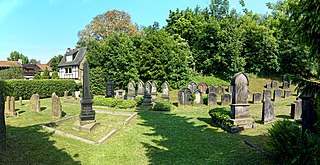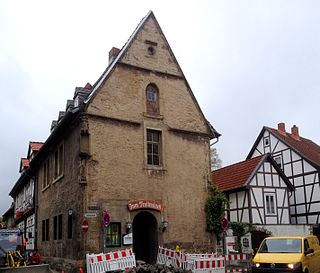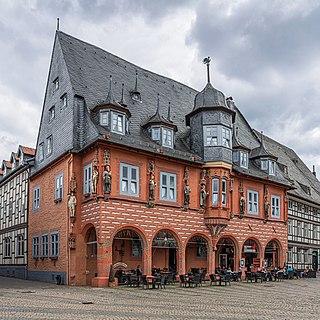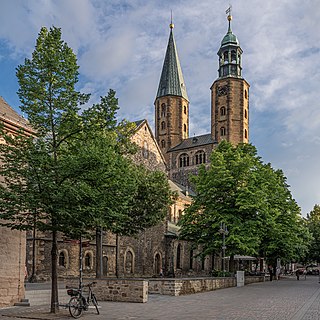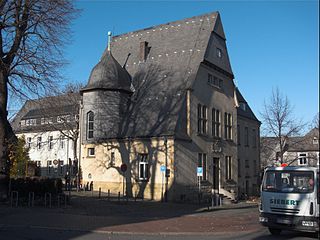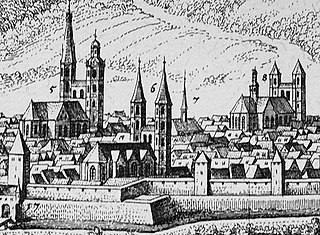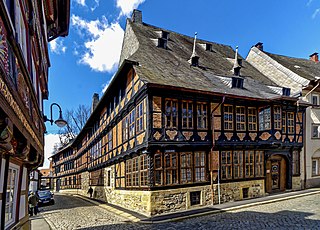Self-guided Sightseeing Tour #1 in Goslar, Germany
Legend
Tour Facts
3 km
30 m
Experience Goslar in Germany in a whole new way with our free self-guided sightseeing tour. This site not only offers you practical information and insider tips, but also a rich variety of activities and sights you shouldn't miss. Whether you love art and culture, want to explore historical sites or simply want to experience the vibrant atmosphere of a lively city - you'll find everything you need for your personal adventure here.
Individual Sights in GoslarSight 1: Jüdischer Friedhof
The Jewish Cemetery Goslar is located in the city of Goslar in southern Lower Saxony in the Glockengießerstraße.
Sight 2: St. Stephani
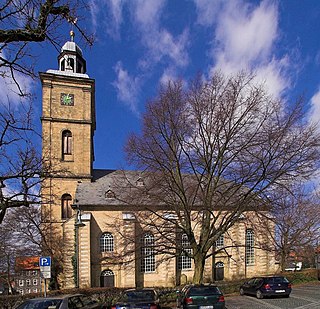
St. Stephen's Church is an Evangelical Lutheran church in the old town of Goslar.
Wikipedia: St.-Stephani-Kirche (Goslar) (DE), Website, Heritage Website
Sight 3: Trollmönch
The Troll Monk is a former monastery building of the lay brotherhood of the Alexians in the old town of Goslar. It is the southwestern corner house of the connecting alley of the same name from Glockengießerstraße to the street An der Abzucht.
Sight 4: Kaiserworth
The historic guild house Kaiserworth is located on the market square in Goslar in Lower Saxony.
Sight 5: Marktbrunnen
The market fountain in Goslar is considered one of the most important bronze castings from the Romanesque period and is the largest and oldest surviving market fountain of the Romanesque period in Germany.
Sight 6: Marktkirche St. Cosmas und Damian
The Market Church of St. Cosmas and Damian is an Evangelical Lutheran church building in the centre of the old town of Goslar. It is the council and main parish church of the city and is named after Saints Cosmas and Damian.
Wikipedia: Marktkirche St. Cosmas und Damian (Goslar) (DE), Website, Heritage Website
Sight 7: Amtsgericht
The Goslar District Court is one of nine district courts in the Braunschweig district court. It is based in Goslar.
Sight 8: St. Thomas
St. Thomas was a church in Goslar, of which no visible remains have been preserved. The small hall building with roof turret stood east of the collegiate church of St. Simon and Judas at the beginning of Thomasstraße, which was named after it.
Sight 9: Goslar Cathedral
The church known as Goslar Cathedral was a collegiate church dedicated to St. Simon and St. Jude in the town of Goslar, Germany. It was built between 1040 and 1050 as part of the Imperial Palace district. The church building was demolished in 1819–1822; today, only the porch of the north portal is preserved. It was a church of Benedictine canons. The term Dom, a German synecdoche used for collegiate churches and cathedrals alike, is often uniformly translated as 'cathedral' into English, even though this collegiate church was never the seat of a bishop.
Sight 10: Kaiserhaus
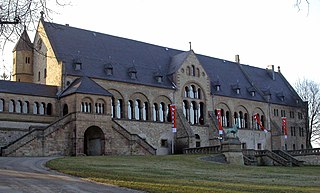
The Imperial Palace of Goslar is a historical building complex at the foot of the Rammelsberg hill in the south of the town of Goslar north of the Harz mountains, central Germany. It covers an area of about 340 by 180 metres. The palace grounds originally included the Kaiserhaus, the old collegiate church of St. Simon and St. Jude, the palace chapel of St. Ulrich and the Church of Our Lady (Liebfrauenkirche). The Kaiserhaus, which has been extensively restored in the late 19th century, was a favourite imperial residence, especially for the Salian emperors. As early as the 11th century, the buildings of the imperial palace had already so impressed the chronicler Lambert of Hersfeld that he described it as the "most famous residence in the empire". Since 1992, the palace site, together with the Goslar's Old Town and the Rammelsberg has been a UNESCO World Heritage Site because of its millennium-long association with mining and testimony to the exchange and advancement of mining technology throughout history.
Sight 11: Siemenshaus
The Siemenshaus is a half-timbered house in Goslar, on the corner of Schreiberstraße and Bergstraße. It was built in 1692/93 by the merchant and city governor Hans Siemens. On the front door is the motto of the builder in ornamental wood carving: ora et labora – pray and work.
Sight 12: Frankenberger Kirche
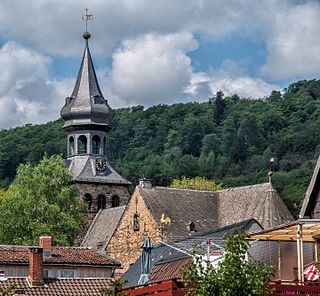
The former monastery church and today's Evangelical Lutheran parish church of St. Peter and Paul in Goslar is usually referred to as the Frankenberg Church and stands on the hill called Frankenberg at the western end of the historic old town. It is Romanesque at its core, but has Gothic and Baroque reconstructions. Together with the building of the "Little Holy Cross", the sexton's house from 1504 and an old gate from 1510 in the immediate vicinity, it conveys a remarkable picture of medieval urban planning.
Wikipedia: Frankenberger Kirche (DE), Website, Website, Heritage Website
Share
How likely are you to recommend us?
Disclaimer Please be aware of your surroundings and do not enter private property. We are not liable for any damages that occur during the tours.
GPX-Download For navigation apps and GPS devices you can download the tour as a GPX file.
